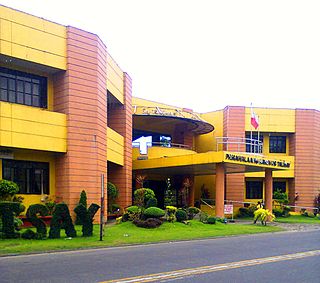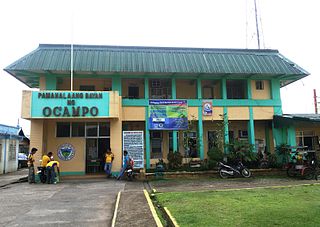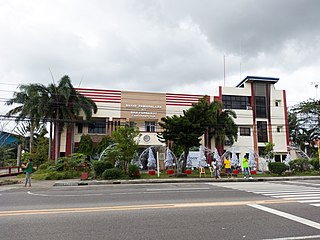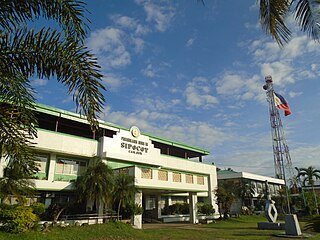This article needs additional citations for verification .(December 2012) |
Paracale | |
|---|---|
| Municipality of Paracale | |
 Coastline of Paracale | |
| Nickname: Gold Town | |
| Motto(s): Ako'y Paracaleño, yaman ko'y ginto nasa lupa nasa puso | |
 Map of Camarines Norte with Paracale highlighted | |
Location within the Philippines | |
| Coordinates: 14°16′47″N122°47′13″E / 14.2797°N 122.7869°E | |
| Country | Philippines |
| Region | Bicol Region |
| Province | Camarines Norte |
| District | 1st district |
| Founded | 1611 |
| Barangays | 27 (see Barangays) |
| Government | |
| • Type | Sangguniang Bayan |
| • Mayor | Romeo Y. Moreno |
| • Vice Mayor | Bernadette E. Asutilla |
| • Representative | Josefina B. Tallado |
| • Municipal Council | Members |
| • Electorate | 37,716 voters (2022) |
| Area | |
| • Total | 197.9 km2 (76.4 sq mi) |
| Elevation | 23 m (75 ft) |
| Highest elevation | 753 m (2,470 ft) |
| Lowest elevation | 0 m (0 ft) |
| Population (2020 census) [3] | |
| • Total | 60,198 |
| • Density | 300/km2 (790/sq mi) |
| • Households | 13,588 |
| Economy | |
| • Income class | 3rd municipal income class |
| • Poverty incidence | 37.61 |
| • Revenue | ₱ 206.7 million (2020) |
| • Assets | ₱ 385.7 million (2020) |
| • Expenditure | ₱ 173.7 million (2020) |
| • Liabilities | ₱ 95.45 million (2020) |
| Service provider | |
| • Electricity | Camarines Norte Electric Cooperative (CANORECO) |
| Time zone | UTC+8 (PST) |
| ZIP code | 4605 |
| PSGC | |
| IDD : area code | +63 (0)54 |
| Native languages | Tagalog |
Paracale, officially the Municipality of Paracale (Tagalog : Bayan ng Paracale), is a 3rd class municipality in the province of Camarines Norte, Bicol region, Island of Luzon Philippines. According to the 2020 census, it has a population of 60,198 people. [3]
Contents
- History
- Gold mining
- Barangays
- Demographics
- Climate
- Economy
- Infrastructure
- Media
- Churches
- Government
- Education
- Public Elementary Schools
- Public Secondary Schools
- References
- External links
Paracle’s economy is driven by agriculture and small scale, often informal gold mining and gold ore processing. Rice, corn, coconut and root crops and vegetables are the major agricultural products. Being a coastal community with a number of historical sites and providing boat access to Calaguas Group of Islands it also has some claim as a tourist destination.























